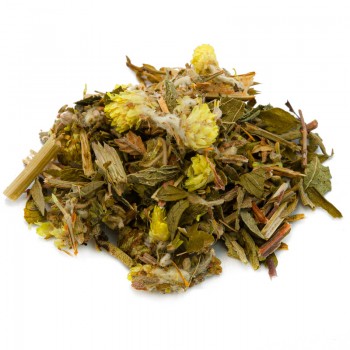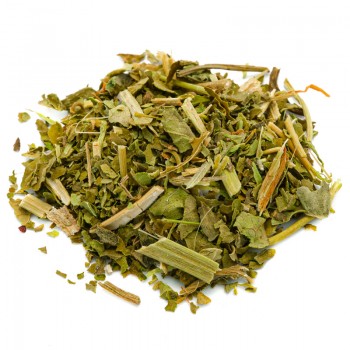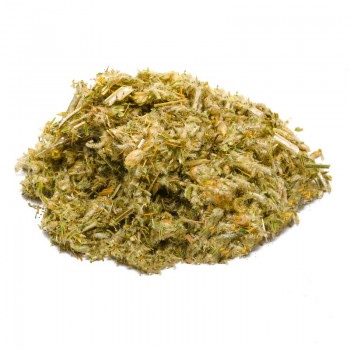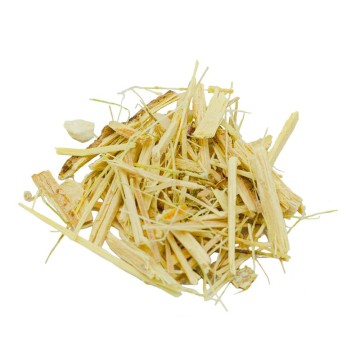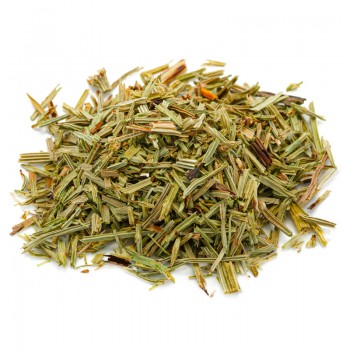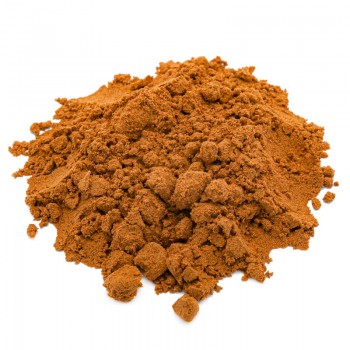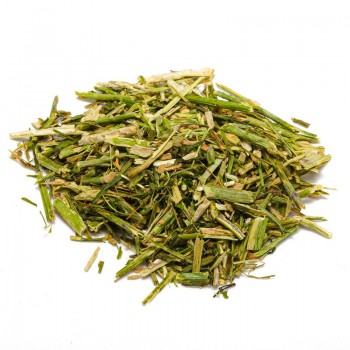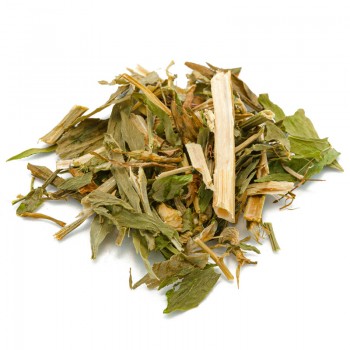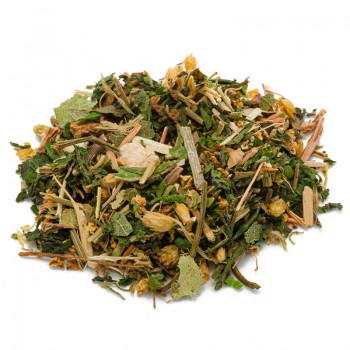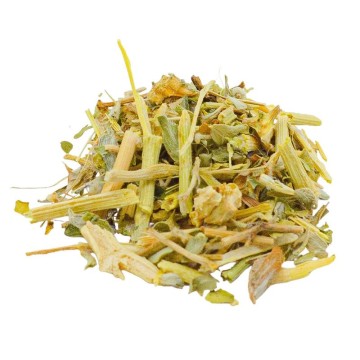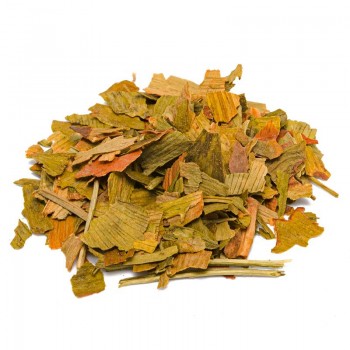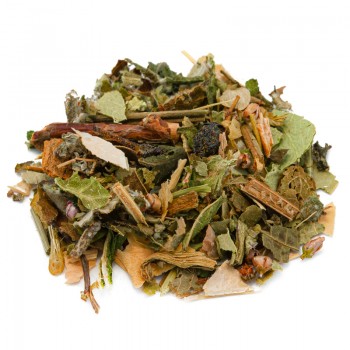The leaves are the most important part of the plant, as they contain a high percentage of sweetening compounds (steviol glycosides). Their properties are also antioxidant and are being studied for their natural antimicrobial and antifungal effects.
Infusion of the leaves promotes actions in the body that help reduce blood sugar, high blood pressure, and inflammation, and has immunostimulant effects.
Furthermore, stevia tea has beneficial properties for the gastrointestinal system, being antidiarrheal and diuretic. It also promotes proper digestion, with its properties that combat stomach acidity.
As an antihyperglycemic agent, meaning it lowers blood glucose levels, stevia is useful as a support in the treatment of diabetes mellitus and obesity.
It is recommended in the kitchen, for preparing desserts and not for sweetening coffee or herbal teas, as it is not chemically refined. Its antioxidant activity may be beneficial as an anti-aging agent and against oxidative stress, given the high content of phenols and total flavonoids in stevia leaves. Stevioside's ability to counteract free radicals also promotes liver health.
Stevia rebaudiana's antihypertension properties are thought to be due to stevioside compounds.
Stevia leaves also possess properties that help combat chronic inflammation in the body. In particular, stevia may be useful in reducing the inflammatory state associated with obesity.
Stevia rebaudiana has also been tested in several studies for its potential ability to inhibit the growth of certain bacteria and fungi in the body.
Origins and History of Cultivation
The Stevia rebaudiana plant has only recently been documented, despite having been used for centuries in its native lands.
It originated in Paraguay and spread to other parts of Brazil and South America, growing well in any type of soil with adequate moisture and drainage. Stevia attracted European attention in the late 19th century, when South American naturalist Moises S. Bertoni discovered the sweetening compounds in its leaves from the native Paraguayans.
The sweet flavor of the phytochemicals was later successfully isolated by chemist Ovidio Rebaudi, after whom the species was named (1905).
Among the Guarani Indians, Stevia rebaudiana was known as kaa he-he, meaning sweet herb. The leaves of the plant were used to enhance certain recipes and as a sweetener for their herbal teas.
The first attempt at planting in Europe was conducted in 1942 in England, but with little success.
Later, the seeds were exported to Japan, where a major effort was made to establish the species in the 1960s.
Currently, the species is cultivated in several countries, including Brazil, Uruguay, Japan, Korea, China, Thailand, and Australia—the main export countries for S. rebaudiana.
It is consumed mainly in Japan, but is successful as a dietary sweetener worldwide.
In the confectionery industry, the main sweetener compounds (steviol glycosides) are extracted to become substitutes for refined sugar or sucrose. They are used in the pharmaceutical industry for their antihyperglycemic and antihypertensive properties. Stevia extracts are popular with fitness enthusiasts and those concerned with their well-being, as well as those suffering from diabetes or high blood sugar.
Plant and flowers
Stevia rebaudiana is a plant belonging to the Asteraceae family. The Stevia genus includes 154 species, of which only two, S. rebaudiana and S. phlebophylla, produce the sweet compounds steviol glycosides.
Stevia rebaudiana is a perennial herb that grows up to about 1 m tall, with a root system that spreads widely in the soil. The leaf is generally lanceolate with a serrated edge and is the most important part of the plant. The flowers are usually small white and purple corollas.
The quality of the leaves, useful for their properties, is inffluenced by environmental factors such as soil conditions, the amount of sunlight received, the age of the leaves at harvest, processing, and storage methods.
Nutritional values of Stevia rebaudiana leaves
The powdered leaves contain steviol glycosides, the most important of which are stevioside and rebaudioside A; steviol and isosteviol are metabolic components of stevioside. They also contain antioxidants such as terpenes and flavonoids, and minerals such as zinc, iron, manganese, and potassium. Among the vitamins found in stevia leaves are vitamin C and vitamin A.
How to use powdered Stevia rebaudiana leaves in herbal tea
Stevia rebaudiana infusion is made by adding about 3-5 grams of powdered leaves to a cup (250 ml) of water at 100°C.
Let the tea steep for 1 to 3 minutes before using.
Stevia rebaudiana: Side Effects and Contraindications
Stevia rebaudiana leaves are generally safe, but can still cause side effects such as abdominal bloating and gastrointestinal discomfort.
To avoid these effects, Stevia rebaudiana tea should be consumed in the recommended dose.
The leaves may interact with some medications for diabetes, heart disease, or blood pressure. Therefore, seek medical advice before using it regularly if you have a medical condition.
Stevia rebaudiana herbal tea is not recommended for children, pregnant women, and breastfeeding women.

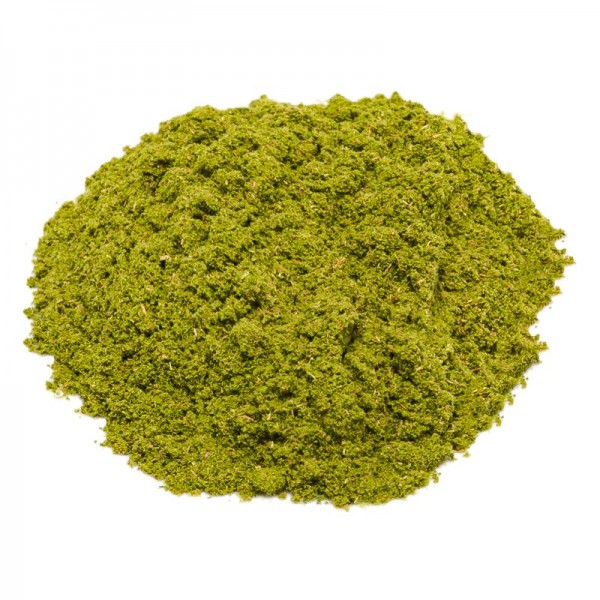









 No reward points for this product.
No reward points for this product.
